Unpretentious in care and sweet-tasting pumpkin “Candy”: advantages and disadvantages of the variety
Pumpkin is one of the oldest crops, but it was only eaten in the 17th century. Today, the vegetable has found recognition among all peoples of the world: in Mexico they make pumpkin chips from it, in England they bake pumpkin pie, and in Russia they cook sweet porridge.
The Candy pumpkin variety is suitable for preparing various dishes like no other. How to grow a rich harvest of Sweets and what is needed for this, we will consider further.
Description of the variety
Sometimes the variety is called Caramel. It is characterized as a table mid-season. The candy is frost-resistant and high-yielding, which allows it to be grown in any climatic conditions. The plant performs well both in greenhouses and in open ground.
Distinctive features
The bushes are large and powerful, the vines and leaves are green. The variety is grown mainly by seedlings, but sometimes Sweetie is sown immediately in priming. In cold regions, the vegetable is grown under film. It ripens within 120-130 days from planting.
Fruit characteristics and yield
The average weight of one pumpkin is 2-3 kg. The vegetables are round, slightly rough, and have a bright red-orange color. Pale green spots can be seen on the surface of the pumpkin. The peel is soft and easy to cut with a knife. The pulp is sweet and juicy, with a high content of sugar and vitamin C. Productivity is about 9 kg per 1 sq. m.
Interesting! In Germany, a real festival is held in honor of pumpkins.Every year from September to November, culinary specialists and sculptors present interesting products made from this vegetable. Coffee made from pumpkin and pumpkin jam.
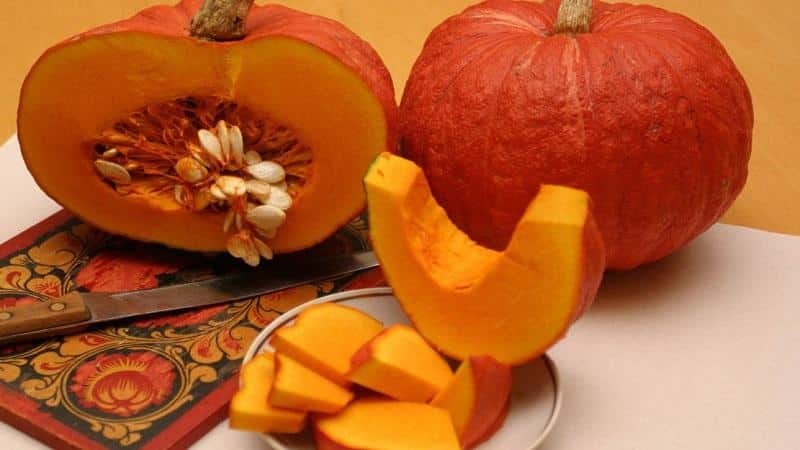
How to grow
The candy shows good results in regions with short summers and cool climates. The crop is planted in two ways: seedlings and non-seedlings. The main thing when planting is to follow all agrotechnical rules.
Planting by seeds
Before planting without seedlings, it is necessary to disinfect seed material. Aloe juice or hydrogen peroxide solution are great for this. Soak the seeds in the liquid overnight, remove and leave to dry. This simple but effective method will disinfect the surface of the seeds and protect against possible diseases.
Then you need to disinfect the soil: formalin is suitable for this. The 40% mixture is diluted in 10 liters of water and the beds are watered. Disinfection is carried out two weeks before the intended planting of the plant. When using formaldehyde, be careful: wear protective clothing, gloves and goggles.
Sow Sweetie into the ground when the soil warms up to a temperature of 10-12 degrees. Place 2-3 seeds in prepared holes. The distance between vegetables should be at least 1 m, since the pumpkin’s root system is powerful, and the plant requires a lot of space and light.
Planting seedlings
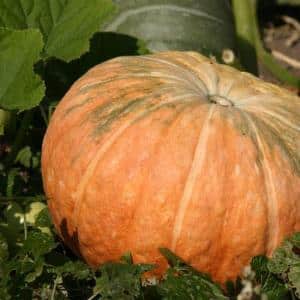 Prepare a container for seedlings. Both regular plastic cups and special containers are suitable. Particularly popular are peat pots, which can be purchased at a gardening store.
Prepare a container for seedlings. Both regular plastic cups and special containers are suitable. Particularly popular are peat pots, which can be purchased at a gardening store.
They ensure 100% survival rate of the plant, since they transplant the sprouts into the garden along with them, without damaging the roots. Products come in cylindrical or oval shapes, so you can choose those that are suitable specifically for your window sill.
In the Moscow region, Leningrad, Pskov and Novgorod regions, it is recommended to plant the crop using seedlings. In the second half of April, the seeds are soaked and planted after the end of spring frosts.
Seedlings require nutritious and safe soil. For pumpkin, it is recommended to use ready-made compounds that are sold in stores. Such soil has a number of advantages over self-prepared mixtures: the prepared soil is equipped with vitamins and elements for pumpkin development, does not contain pathogens and is absolutely harmless to sprouts.
Important! Make furrows 2-3 cm deep in the soil, place 1-2 seeds in each and sprinkle soil on top. Afterwards, be sure to water the seedlings with warm water and place them in a warm and bright place. Avoid drafts. After 2-3 weeks, plant the seedlings in open ground.
Care
Caring for Candy pumpkin consists of several simple rules. Pay special attention to the following procedures:
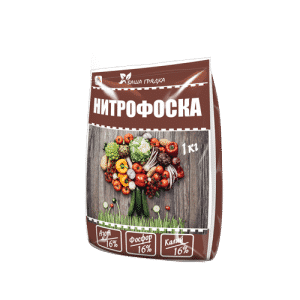 Water the plants every 5-7 days. Use melt or rain water and never wet the beds with spring water. On average, one bush uses 1.5-2 liters of water. Try to ensure that moisture falls mainly under the root, and not on the stems and leaves. For health purposes, nettle or ash is added to irrigation water. They strengthen the plant’s immunity and protect the bushes from insect pests.
Water the plants every 5-7 days. Use melt or rain water and never wet the beds with spring water. On average, one bush uses 1.5-2 liters of water. Try to ensure that moisture falls mainly under the root, and not on the stems and leaves. For health purposes, nettle or ash is added to irrigation water. They strengthen the plant’s immunity and protect the bushes from insect pests.- Loosen the beds every week. This procedure removes the top crust and improves oxygen access to the roots. It is better to loosen the soil before watering or before applying root fertilizers.
- Remove weeds. Often in the garden beds there are bindweed or wild smokeweed, which live and feed on pumpkins. Weeds develop especially actively after rains, fogs or dew.
- Don't forget about organic fertilizers. The candy develops well and shows excellent yield if the bushes are fertilized with bird droppings. For mineral complexes, use “Nitrophoska” in a ratio of 10 g per 5 liters of water. It is good to combine fertilizing with watering. First, moisten the beds and then apply fertilizer.
Features of cultivation and possible difficulties
To increase the yield, the pumpkin is shaped, the tops are pinched and the side shoots (stepchildren) are removed. Pinching is necessary in order to stop the growth of the bush when it is no longer necessary.
Removing the shoots helps the vegetables get more sunlight. It is better to remove shoots when their length is no more than 7 cm. While the pumpkin is ripening, it is necessary to thin out the beds, removing excess brushes so that the bush is not too dense.
Another feature of growing is caring for the lashes. When they become too long, it is recommended to untangle them and place them on the bed, sprinkling soil on top. Thanks to this, the vines produce additional roots, which makes the plant stronger.
Growing tips from experienced gardeners
Pumpkin is a melon crop that is very popular among gardeners throughout the country. It is grown both for personal consumption and on an industrial scale.
To make the harvest tasty and beautiful, farmers advise:
- Plant pumpkin after legumes, root vegetables or potatoes. Avoid planting after squash, cucumbers and zucchini.
- Provide a sunny, spacious and windless place for the plant.The soil must be nutritious and fertile. Sandy loam soil is best.
- Use growth stimulants. For example, spraying with the Zdraven complex accelerates the development of roots, and the Zircon stimulator enhances immunity to changes in weather conditions.
- Use the drug "Mycefit". The product accelerates photosynthesis, improves cold resistance and increases the concentration of vitamins in vegetables.
- Use the “Magic Watering Can” product as a top dressing. Its balanced composition stimulates the development of the bush and increases resistance to disease.
- For especially large vegetables, build additional support from boards and bricks.
Diseases and pests
During the growth period, the pumpkin must be actively protected from diseases and pests. Often, the crop is attacked by melon aphids, which suck the juice from the shoots, thereby taking away some of the nutrients. To fight insects, use a soap solution: 100 g of grated soap per 1 liter of water. Spray the bushes with the solution every two weeks.
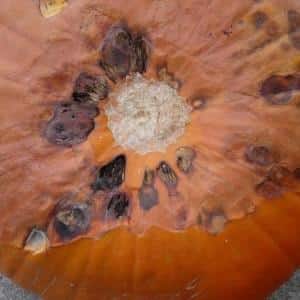 The pumpkin is also attacked by a mole cricket. It gnaws through the roots, causing the pumpkins to rot. For preventive purposes, use the drug "Medvetox". Place the medicine granules in the holes, and the mole cricket will not be afraid.
The pumpkin is also attacked by a mole cricket. It gnaws through the roots, causing the pumpkins to rot. For preventive purposes, use the drug "Medvetox". Place the medicine granules in the holes, and the mole cricket will not be afraid.
Among the diseases, melons and melons are attacked by Alternaria blight. or black dry spotting. At first, black or white spots cover the vegetables, then a black coating appears. To combat Alternaria, use an ash solution or spray with Bordeaux mixture.
Pumpkins are also often affected by white rot. The plant becomes soft and slippery to the touch. The causes of the disease lie in high humidity and sudden changes in temperature.To prevent white rot, plant the bushes in time and spray them with a solution of yeast or nettle.
Harvesting and application
The ripeness of a pumpkin can be easily determined by its stalk. As soon as it becomes dry, feel free to harvest. Cut off ripe pumpkins along with the stalk: this way the vegetable will be stored longer and retain its taste and external qualities. The ideal place for storage is dry cellars and basements. Unripe vegetables are eaten immediately.
Pumpkin is one of the record holders for the content of useful elements. It is rich in proteins and fats, macroelements, B vitamins, as well as rare vitamin T, which improves metabolism in the body.
The product is used to prepare excellent soups and porridges, cold appetizers and vegetable side dishes. In addition, pumpkin is indispensable in preparing children's and dietary dishes. dishes. For example, low-calorie pumpkin baking recipes are very popular.
Interesting! The high fluoride content in the pulp prevents the appearance of dental caries, and pectins help remove cholesterol and harmful bacteria from the body. It is also noteworthy that not only the pulp is used for food, but also seeds.
Advantages and disadvantages of the variety
The main advantages of the Candy variety:
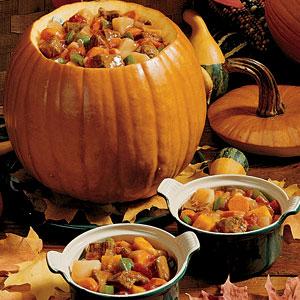 the vegetable has a whole range of elements beneficial to the human body: its regular consumption improves the immune system, it is an excellent preventative against many diseases;
the vegetable has a whole range of elements beneficial to the human body: its regular consumption improves the immune system, it is an excellent preventative against many diseases;- Pumpkin pulp and seeds are used in preparing many dishes. Pumpkin is consumed both raw and after heat treatment;
- the variety is resistant to most diseases and shows excellent yield even in the northern regions of the country.
Among the disadvantages of growing a table variety, they note the need for mandatory formation of a bush. Sometimes it is difficult for an untrained gardener to properly remove the shoots and tie the plant to a support. Otherwise, the variety has no significant disadvantages.
Farmer reviews
Many gardeners love pumpkin because of its rich taste. Some people prefer to grow the Candy variety year after year, while others are attracted to larger and more unpretentious pumpkins. What do experienced farmers say about Sweetie?
 Evgeniy, Cheboksary: “I always make sure that the harvest is not only tasty, but also beneficial. Of all the pumpkin varieties, I like Sweetie the most. The vegetables themselves are compact and do not cause any trouble in caring for them. I grow it in open ground. I use it to make soups and also freeze the pulp for the winter.”
Evgeniy, Cheboksary: “I always make sure that the harvest is not only tasty, but also beneficial. Of all the pumpkin varieties, I like Sweetie the most. The vegetables themselves are compact and do not cause any trouble in caring for them. I grow it in open ground. I use it to make soups and also freeze the pulp for the winter.”
Alena, St. Petersburg: “I liked the Sweetie variety because it is not picky about soil and weather. The summer was wet and cool, but the harvest was still good. I will plant Sweetie next year too.”
Maxim, Orel: “Of all the planted varieties, Konfetka ranks last. Although the bushes were powerful, the vegetables were slow to set, and the vines were very entangled with each other. The taste is, in my opinion, average.”
Conclusion
By growing the Candy variety on your plot, you are guaranteed to receive a rich and tasty harvest. In addition, the vegetable is stored for a long time, so you can get vitamins in winter and even in spring.
Pumpkin is indispensable for those who monitor their health and adhere to proper nutrition. From the table variety Konfetka you can cook porridge and make juice.